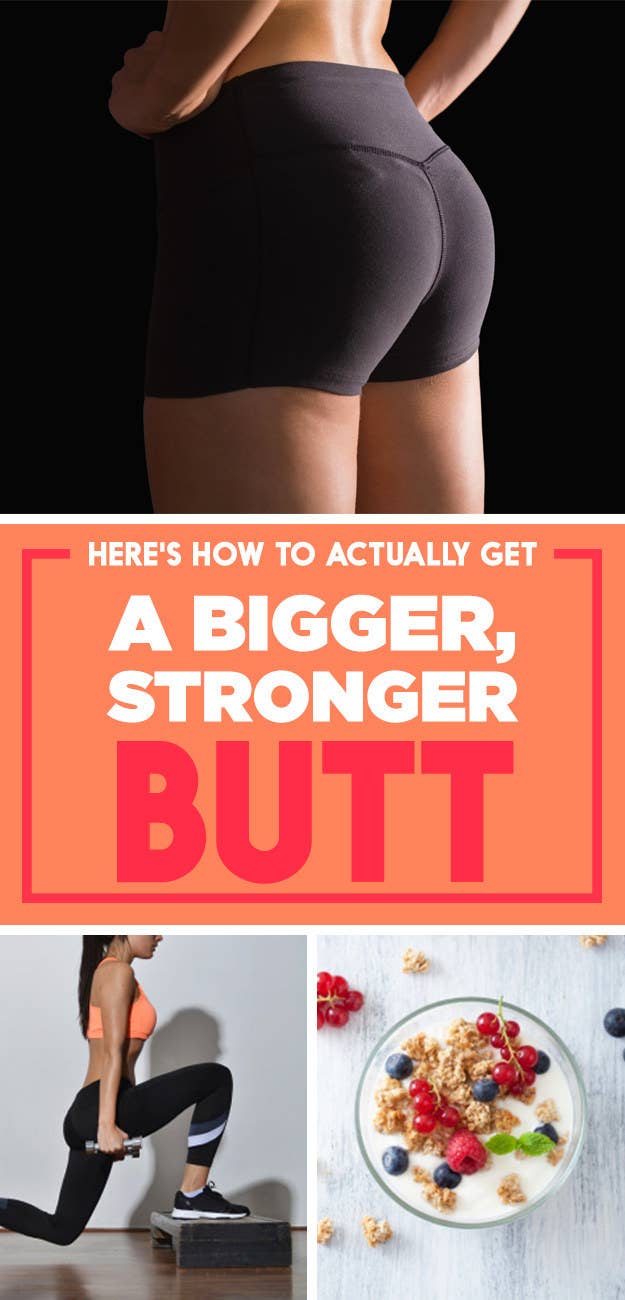
Not everyone wants to change the appearance of their butt. And that's OK! But for those who do it can be tough to know exactly how to go about it and how your diet, training, and lifestyle can support or inhibit your goals. To provide helpful tips on how to achieve your body composition goals safely, we reached out to two strength and conditioning experts — Bret Contreras, CSCS, personal trainer, speaker, and author, and strength and conditioning expert Tony Gentilcore, CSCS, co-founder Cressey Sports Performance — to tell us their thoughts on how to get a bigger butt.
1. The first thing to know is that when we talk about butts, we're talking about three muscles in your backside.

2. So if you want a bigger butt, you need to work on making those three muscles grow.
3. The other thing about the appearance of your butt has to do with how much fat is covering your glutes.
4. This means that one of the first things you will want to do is determine whether you'd like to lose body fat.
5. If you do want to lose fat, you'll need to eat fewer calories than you need to maintain your current weight.

6. You'll probably need to eat fewer carbs and more protein. And btw skip the low-fat diet thing.
7. Don't rely on a regular scale, because you want to be sure that the weight you're losing is fat.
8. Exercise and cardio are crucial, but when it comes to your glutes, not just anything will do.

9. The best cardio will be high-intensity moves that target your glutes — like stair sprints and hill repeats.
10. Don't believe the hype; you have to do more than just squat.

11. Start your glute strength training with bodyweight exercises like glute bridges and hip thrusts.


If you're new to training your glutes or if you spend a lot of time sitting, chances are simple bodyweight exercises will be a good place to start; they will be challenging enough to start getting your glutes stronger but not so hard that they're impossible to perform.
Gentilcore recommends starting with glute bridges (above left) and hip thrusts (above right), first mastering the movements themselves and then performing them in higher reps and sets before moving on to more challenging bodyweight movements (like single-leg glute bridges and single-leg hip thrusts). Check out three variations of hip thrusts demo'd here.
And don't just limit your glute training to one kind of exercise, warns Contreras. You should have tons of variety between the bodyweight moves you can do at home, adding resistance bands, and using dumbbells, barbells, or machines at the gym. "People should perform a wide variety of glute exercises throughout the week, ranging from variations of hip thrusts, to squats, to deadlifts, to lunges, to back extensions, to cable kickbacks, and to lateral band walks," Contreras says.
12. Once your glutes are a little stronger, add weights and learn more challenging movements.
13. But going too heavy before you're ready will really mess up your #gains.
14. Make sure you're strength training three to five days per week and practicing progressive overload.
15. Start and end each workout with your glute-training exercises.


"Each session should start with an exercise that targets that area. The more exposure you give that body part to grow, the more it will grow," says Gentilcore. He recommends warming up with bodyweight glute-activating exercises (like glute bridges or hip thrusts), then doing the main part of your workout (making sure to include a multi-joint glute-targeting movement like deadlifts or squats), and then finishing with single-leg movements like glute bridge or hip-thrust variations, lunges, or split squats.
